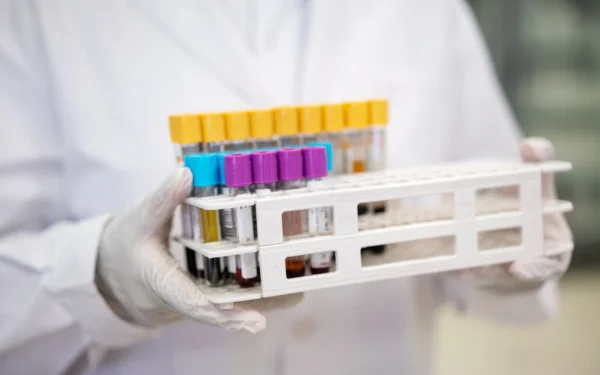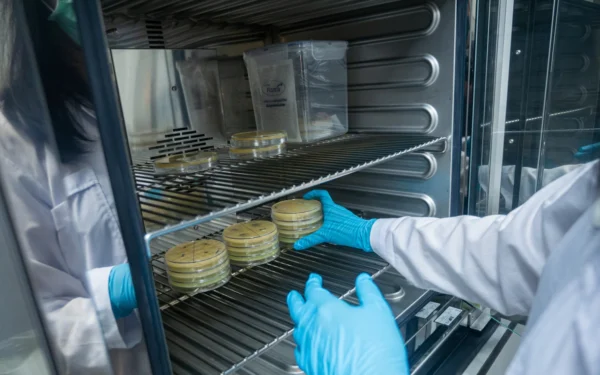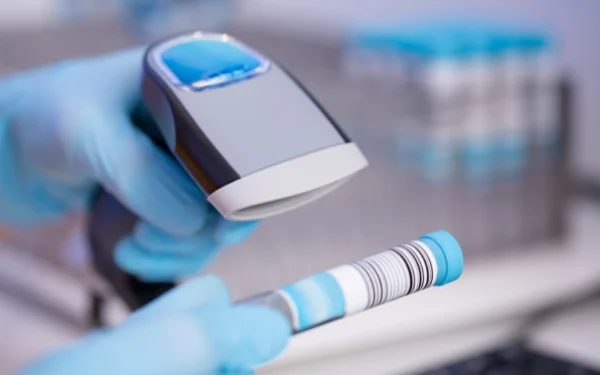For researchers under pressure to deliver promising therapeutic candidates faster and at lower costs, sample traceability is foundational to producing reliable, reproducible results that can advance R&D programs. Imagine discovering that weeks of in vivo work must be repeated because some animals were dosed with a mislabeled compound, or realizing that a valuable patient-derived sample, the key comparator in a critical study, is missing. In high-stakes research environments, the ability to trace a sample’s entire history—where it came from, how it was handled, and how it was used—supports confident decision-making.
A lead compound may be tested in multiple assays across collaborating functions, whereas a patient biopsy might be shipped from a clinical site to a clinical research organization (CRO) before undergoing extensive analysis at a pharma research lab. In all these scenarios, critical context can be lost between handoffs. Without established infrastructure to track these samples throughout their lifecycles, scientists may struggle to complete experiments effectively, interpret findings with confidence, or prioritize next steps, resulting in delays that can slow the delivery of life-saving therapies to patients.
While manual approaches like spreadsheets or ad hoc databases can capture sample information, they require significant oversight to ensure consistent lineage tracking, particularly for large sample inventories. It also takes more time and resources to promptly identify discrepancies that could undermine reproducibility when tracking samples using these methods. To address these challenges, scalable informatics platforms and integrated sample management systems preserve essential context throughout a sample’s lifecycle, from collection and accessioning through processing, storage, analysis, and disposal.
Why does sample traceability matter in biopharma R&D?
Establishing reliable sample tracking systems ensures researchers can focus on high-value work with confidence that their data is reproducible and verifiable. When samples change hands, missing context, such as formulation details or handling conditions, can stall critical experiments and frustrate researchers. For example, biologists running large animal studies can only dose accurately if formulation histories of the compounds are clear. Once tissues are harvested, metadata traceability ensures the next team can proceed directly with analysis rather than pausing to reconcile gaps. By carrying complete lineage data forward at every handoff, scientists can make confident decisions and avoid costly delays from chasing missing information.
As R&D operations scale to include more handoffs and increasingly complex custody chains, scientists cannot afford to spend hours reconciling inconsistencies, repeating experiments, or troubleshooting missing samples.
Beyond operational pressures, traceability is also central to regulatory compliance. Certain regulations demand meticulous documentation of every handoff, condition change, and experimental use. However, manual entry and siloed systems increase the risk of broken custody chains or misplaced samples, which can delay regulatory filings, prolong audits, and strain relations with CROs and other partners.
The need for traceability in the modern lab workflow
Gaps in sample traceability rarely stem from a single mislabeled tube; they usually reflect broader workflow challenges in how sample data is managed and shared. Managing these challenges requires well-defined processes, structured reporting, and robust record keeping to safeguard data integrity and achieve regulatory compliance. When new team members join a lab, for example, inconsistent practices in labeling or storage can quickly lead to traceability issues.
Adopting a new inventory system may improve visibility into sample locations, but if legacy records are incomplete or formatted inconsistently, the gaps persist. Likewise, integrating tracking technology with existing laboratory information management systems (LIMS), electronic lab notebooks (ELNs), or other informatics tools often requires significant customization. Without integration, workflows remain siloed and researchers spend hours reconciling data instead of interpreting results.
Therefore, piecemeal fixes rarely solve the core problem. To enable reproducible science at scale, traceability must be embedded across the entire research ecosystem.
How to build efficient sample tracking systems in your lab
Beyond easing daily frustrations, sample traceability ensures every experiment is grounded in reproducible, high-quality data that can withstand scientific and regulatory scrutiny. Missing metadata, duplicated records, or hours lost reconciling spreadsheets can delay progress and put promising therapeutic programs at risk.
Here’s how you can improve traceability across the sample lifecycle:
Identify risks to your sample inventory
Every traceability strategy starts by finding where things break down. Audit your current inventory to spot weak points, such as missing metadata or inconsistent documentation, before they compromise critical experiments.
Consider these key questions:
- What risks are your samples exposed to?
- Are some sample types more consistently documented than others?
- Is your sample inventory audit-ready?
For example, if a CRO processes your samples but omits key metadata about storage conditions from the manifest, unexplained differences may appear later in assay results across batched samples. Without complete lineage data, troubleshooting becomes guesswork. Similarly, in late-stage development, incomplete toxicology sample records could force teams to repeat high-cost, time-sensitive studies, which can push back regulatory milestones. Identifying such risks early prevents costly rework and ensures collaborators align on data standards.
Automate repetitive sample tracking tasks
Once risks are understood, the next step is to systematically reduce them through automation. Regardless of research lab size, manual sample tracking is time-consuming and prone to errors. Implementing barcodes or RFID tags helps minimize human error and accelerates record-keeping.
When integrated with sample management software, automation provides real-time visibility into each sample’s location and status. This level of visibility is critical as discovery programs expand from hundreds to tens of thousands of samples across multiple projects. A research team that previously spent dozens of hours manually reconciling thousands of records can instead focus on designing experiments, interpreting results, and following up on unclear findings.
Assign unique identifiers to each sample
Without a persistent identifier, essential parts of a sample’s story can be lost. Assign every sample a unique digital ID that persists across its lifecycle, even as it moves between collaborators. Detailed lineage data enables reproducibility and makes it far easier to troubleshoot failed experiments when all parties reference the same authoritative record. Unique identifiers also help protect the scientific and commercial value of assets by reducing misattribution or loss of materials linked to intellectual property, especially in complex, multi-year collaborations.
Digitize workflows to centralize access
When sample records live in silos, collaboration slows down. Consolidate disparate records into a single digital source of truth to reduce duplication and conflicting information. Start by migrating reliable sample inventories and reconciling incomplete ones. This harmonized view supports internal collaboration and streamlines external partnerships with CROs, academic collaborators, and global R&D sites. By giving every team access to the same authoritative dataset, labs eliminate delays in sample sharing, strengthen data confidence, and support more efficient program-level decision-making.
Invest in training and continuous improvement
Even the best systems only work if scientists use them effectively. Provide ongoing training and establish feedback loops to minimize inefficiencies. As new scientists join, protocols evolve, or regulatory standards shift, teams must continually adapt their practices to sustain robust traceability.
Building accountability into lab culture, through dashboards, usage metrics, and designated traceability champions, helps maintain traceability mechanisms. As your R&D portfolio grows in scale and complexity, ensure your traceability strategy evolves with organizational needs, keeping researchers focused on science rather than administrative overhead.
Enabling seamless research collaboration and a path toward scientific progress
As biopharma research becomes increasingly collaborative, scientists need to track and manage samples effectively across multiple labs. Integrated traceability systems provide a shared platform to streamline collaboration between researchers from different labs or institutions. By assigning unique identifiers and maintaining comprehensive digital records, these technologies help prevent sample misidentification and maximize the transparency and accuracy of sample information.
Ultimately, robust sample traceability supports a more transparent, accountable, and effective biopharma ecosystem. It fosters confidence in scientific progress and research results, strengthens regulatory filings, and garners public trust in new molecular entities and therapies.
Drive scientific progress with improved sample traceability
By embedding traceability into the entire research ecosystem rather than applying piecemeal fixes, scientists spend less time troubleshooting and focus on generating reproducible data that advances therapeutic discovery. The result is a lab environment where every sample is accurately tracked, contextualized, and retrievable, enabling confident decision-making, advancing research progress, and ultimately, accelerating the delivery of transformative therapies to patients.





